4. Bonding and Nesting - Stone Curlews, Pratincoles, Storks and Penguins
In this section we continue to look at the breeding habits of a number of families and individual species. We meet three families which are ground nesters and one that chooses an unexpected habitat for rearing their young.
Burhinidae - The Stone Curlews
The stone curlews are crepuscular and nocturnal foraging exclusively on the ground at night for insects and other invertebrates. The nine species are resident across their range throughout the tropics and temperate lands of the old world including Australia. The exception is the Eurasian stone-curlew which winters in Africa. They have the typical long legs and neck of the waders but unsually, most species prefer arid or semi-arid habitats although like other waders they restrict their feeding and breeding activity to the ground. Stone curlews are monogamous. They are also known as thick-knees or, in Afrikaans, dikkops, which translates into English as "thick head" and I shall adopt the Afrikaans' name for the two South African species appearing here.
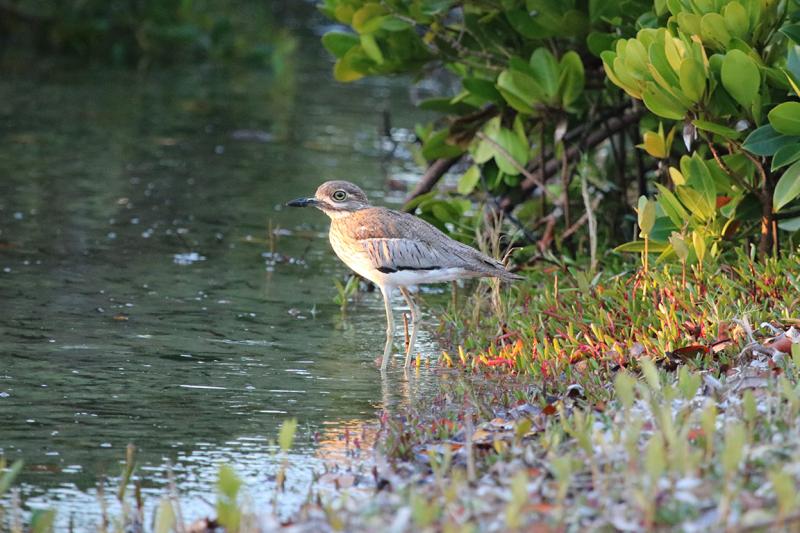
Water Dikkop
The water dikkop is the exception to the stone curlew preference for dry environments, staying close to the edges of water such as estuaries, rivers. mangroves, beaches and lakes although they need woodland in close proximity for shelter. They choose a stony or sandy spot where they make a shallow scrape. They lay two eggs which both male and female incubate, and both birds also feed the chicks.They are common across sub-Saharan Africa.
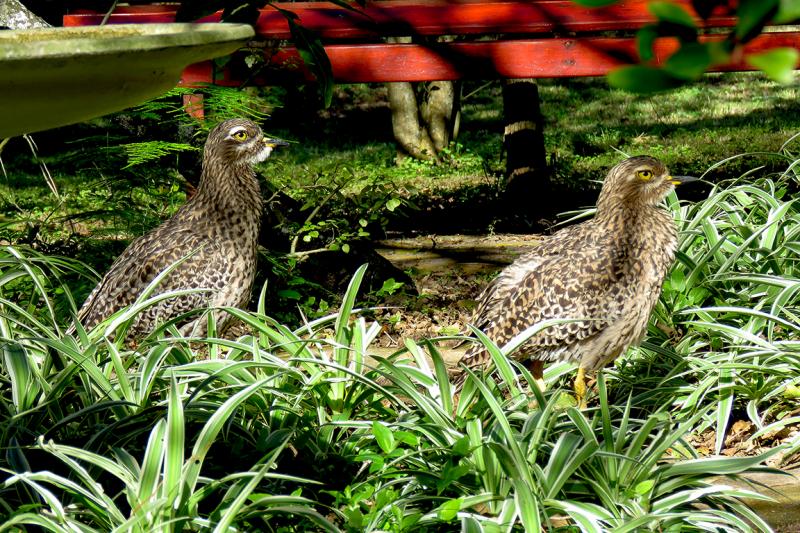
Spotted Dikkop
Although its usual habitat is grassland and savannah in sub-Saharan Africa, the spotted dikkop is the only member of the family to have adapted to a suburban environment and is found in large private gardens and parkland in South African where it also nests. This pair above were resident on an area of open woodland where they spent the day before venturing further afield at night. During the day they remained stationary either standing or sitting, relying on their camouflaged plumage for safey. They were photographed on Leisure Island, Knysna, South Africa, conveniently sunlit rather than in their preferred leafy shade.
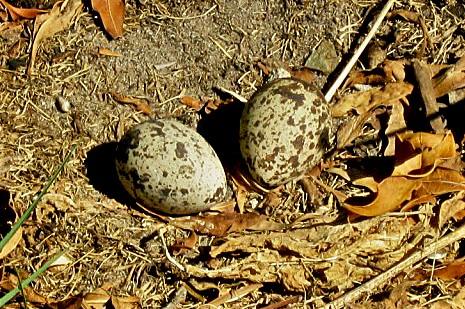
Spotted Dikkop Eggs
The spotted dikkop excavates a shallow scrape which may be lined with a variety of materials but very often little effort is made apart from a few leaves and grasses. The female lays two, beautifully mottled and well camouflaged eggs which are difficult to see against a background of earth, dead leaves and twigs.
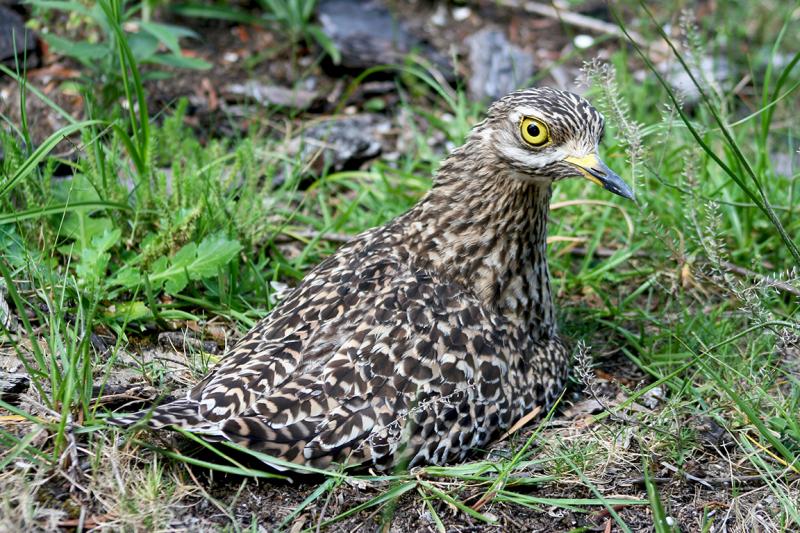
Spotted Dikkop - on the nest
Both male and female dikkops incubate the eggs.
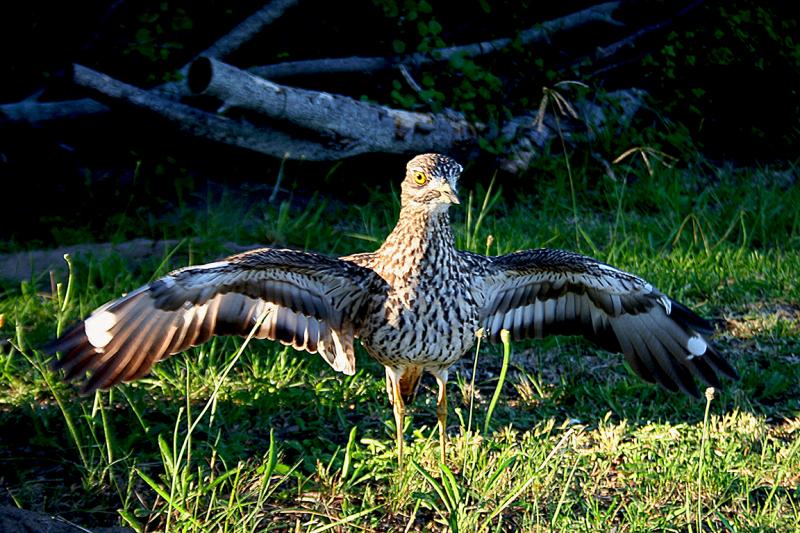
Spotted Dikkop
The spotted dikkop is a brave defender of its nesting site and will attack intruders much larger than itself, including humans. I was getting too close to the nest when I photographed this male on Leisure Island with its wings widespread and tail raised to make itself appear larger and more formidable.
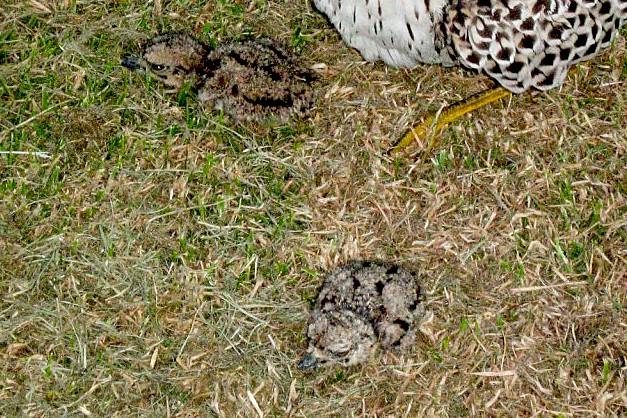
Spotted Dikkop - Chicks
Predation rates for chicks is very high and many people who are delighted to host a pair of dikkops in their garden report that their chicks disappear abruptly, sometimes within a day or two of hatching. This is despite the fact that the chicks are precocial and walk within minutes of hatching, a vital evolutionary attribute for a ground nesting bird surrounded by dangers. These two chicks flatten themselves against the ground and are well camouflaged even on a grass lawn.
Both parents feed the chicks on a diet of insects, small mammals and lizards.
Glareolidae - The Pratincoles and Coursers
(Durzan CCBY-SA4.0)
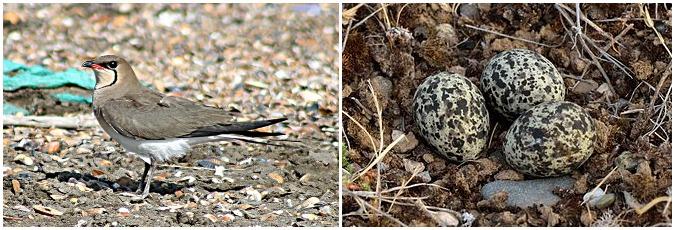
Collared Pratincole and Eggs
The pratincoles and coursers, like the stone curlews, are classified as waders, and like them, they are waders with a difference. In some ways they are more like terns. They have short legs and the long, pointed wings and forked tails of fast, agile, aerial hunters. Like swallows and swifts they are adept at catching insects on the wing but also feed on the ground. Pratincoles have the short beak of an aerial feeder. They tend to be crepuscular and rest in the heat of the day. They are found mostly in warmer regions of southern Europe and North Africa and into Asia and Australia. Pratincoles are monogamous.
Any species found breeding in the more temperate North are migrants like the collared pratincole above that was photographed near Baku in Azerbaijan. The collared pratincole lays two to four eggs in a bare scrape in sand or stony ground. Both parents incubate the eggs and feed the chicks.Like other members of the wader family, chicks are precocial and are born covered in down, eyes open and able to run.
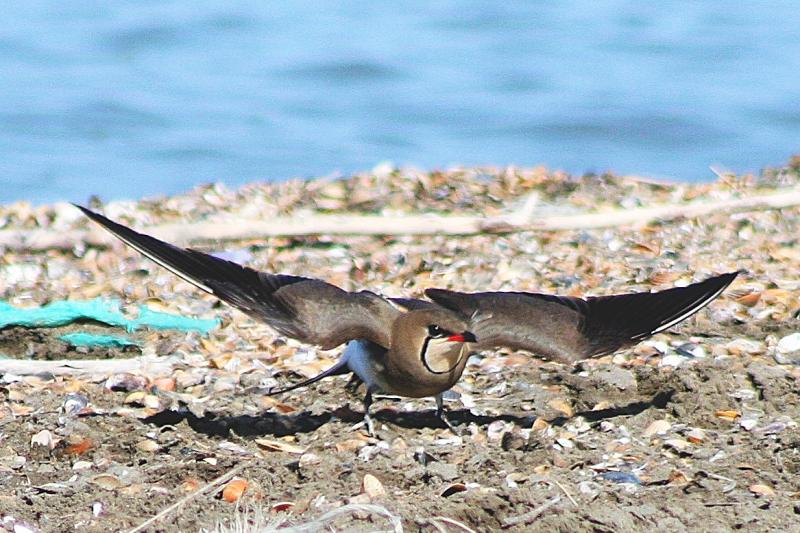
Collared Pratincole
If the nest is threatened the parents will feign injury and tempt predators away with the prospect of an easy meal. The pratincole above pretended to have a broken wing and was prepared to come very close to me to protect its nest. This is a ruse used by a number of species including the spotted dikkop.
Ciconiiformes - The Storks
Storks favour warmer climates and those that breed further north tend to migrate south for the winter. With one or two exceptions they prefer habitats with plenty of water such as water meadows, paddyfields, slow moving rivers, ponds and lakes. All species are large with beaks to match. Storks are carnivorous, with a reptiles, insects, fish, amphibians and small mammals all on the menu. Originally considered monogamous, some storks may switch partners after migration or migrate separate from a partner.
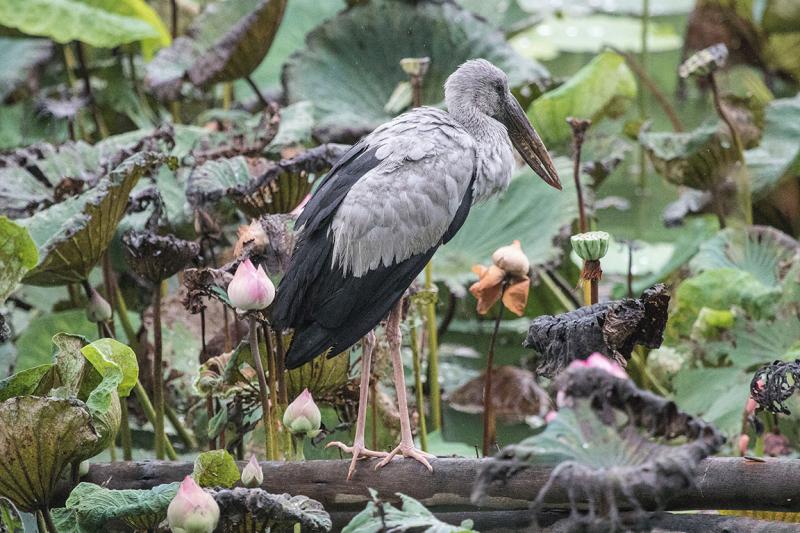
Asian Openbill
The Asian openbill and its close relative, the African openbill have distinctive features. The gap between the upper and lower mandible is one. Another related factor is their specialist diet of freshwater molluscs, particularly snails. Contrary to popular belief the gap in the bill does not function like a nutcracker in order to crack open snail shells. They extract the snail from the shell with the fine tip of their beaks and their saliva has a narcotic effect on the snail making it easier to extract. The gap may enable the beak tip to strike at a greater angle increasing the force applied to the snail shells. Openbills also feed on water snakes, frogs and large insects. The openbill's gap between upper and lower mandible is clearly visible in the picture above, located on an overgrown waterway in Ayutthaya, Thailand.
Asian openbills breed in colonies building large nests in trees.. They are occasionally "polygenous", with two females sharing one male All three wiill feed and rear the young with such broods having a high success rate.
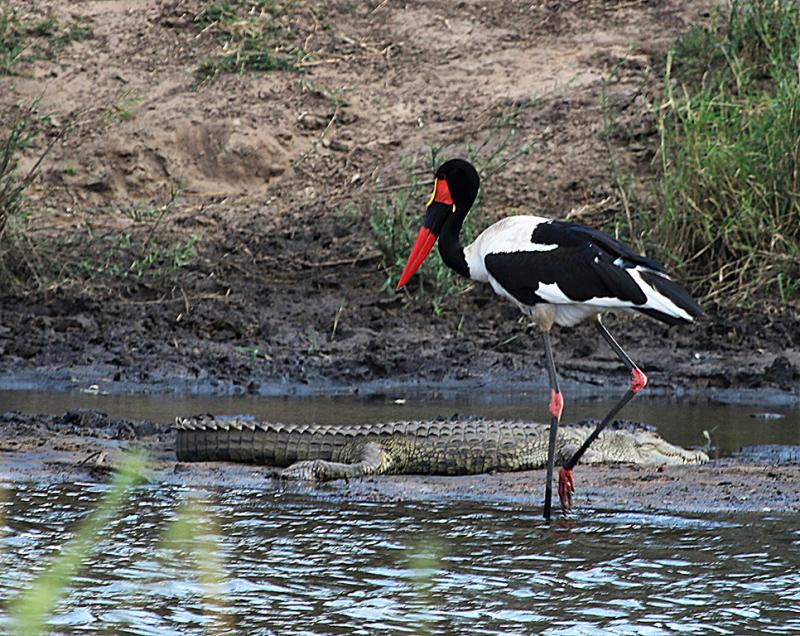
Saddle-billed Stork
Saddle-billed storks are are the biggest of all the storks and can be nearly 6 feet tall. They are found throughout tropical sub-Saharan africa, The bird above was photographed in Kruger National Park and seems unperturbed by its fearsome neighbour, a Nile crocodile.
Unlike the Asian openbill, the saddle-billed stork is higly territorial and a loner both when feeding and when nesting. It prefers to be on or close ot to water in lakes, ponds, wetland, rivers and streams and its diet is similar to most other storks. They tend to stay in one area unless drought conditions dictate otherwise. The saddle-bill is found in suitable habitats throughout sub-Saharan African although considered threatened in South Africa. The nest is a bulky, untidy, conspicuous structure made of large twigs built in a tree. The female lays one or two white eggs and incubates them for up to five weeks. It is up to a further 14 weeks before the chicks fledge. Both parents rear the young. Saddle-billed storks are monogamous and pairs may remain together for many years.
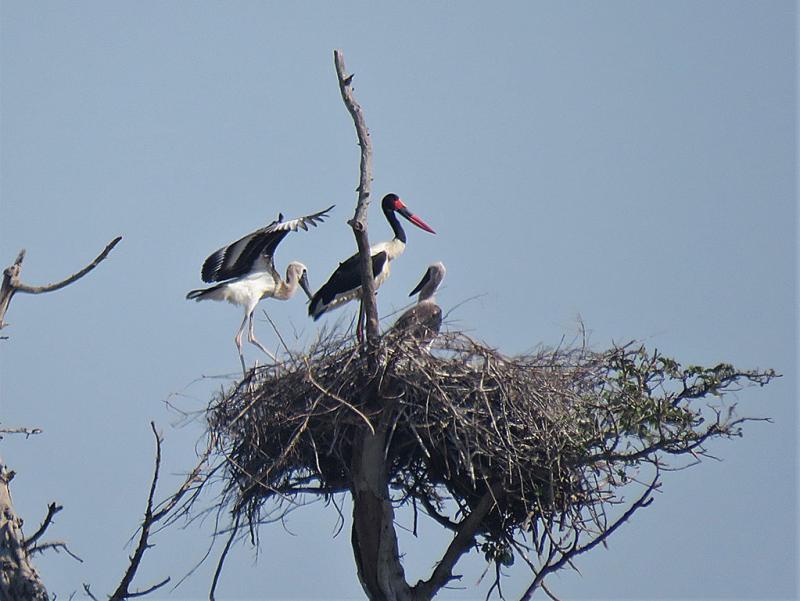
Saddle-billed Stork
Unusually the nest above in Hluhluwe National Park, Kwa-Zulu Natal, South Africa was not close to water. Maybe it was due to a shortage of trees on the semi-arid savannah. The fledgling on the left had just returned from a flight that may have been its first. There is only one adult present and its partner may be away hunting food for the chicks.
Spheniscidae - The Penguins
Flightless inhabitants of the Southern Hemisphere (apart from Galapagos Penguins) , known for their ungainly waddle on land and their fast, agile and streamlined performance in water, penguins are the much loved ambassadors of the bird world. They are also highly photogenic. For a long time they were thought to be monogamous and many do stay together at least for a season. But colonial nesters may be tempted and infidelity is a feature of penguin life. The female will usually produce one or two eggs and share incubation and chick feeding.
The African penguin is found only in coastal habitats in South Africa and Namibia, mainly on islands. They are classified as endangered, numbers having dropped from 1.5 million in 1910 to around 20,000 today. Up to the 1960's and 70's both birds and eggs were considered fair game for hungry locals. They are also victims of predators such as leopards on land and sharks in the sea. Oil spills have also taken their toll.
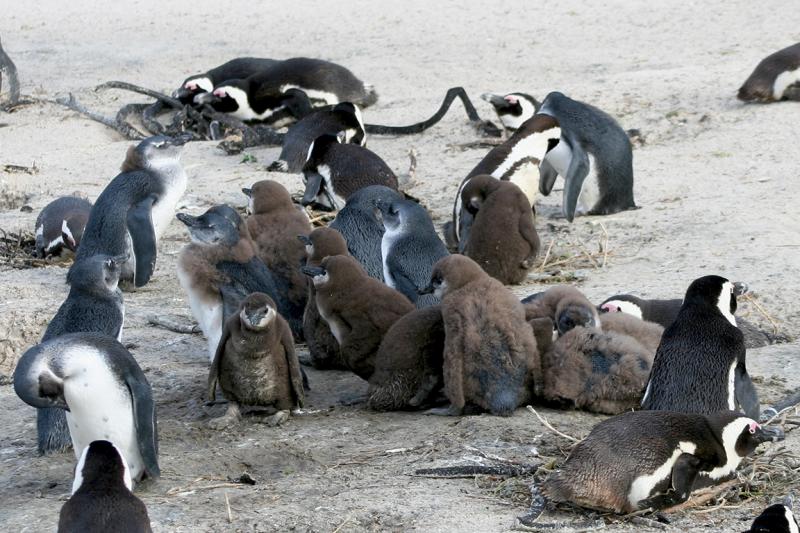
Molting African Penguins
In order to keep eggs cool, African penguins usually dig burrows in either guano or sand, the only bird in our nesting sections to do so. They may also excavate a shallow scrape sheltered beneath a bush or a boulder. The female lays two eggs which are incubated by both male and female. Chicks are raised by both parents for about a month and a half when they are transfered to creches as shown in the photograph above, taken at Boulder Beach, Simonstown, South Africa. Parents leave them and return to the sea to feed. During the molting period when the adult plumage first grows, it is not water resistant so the juveniles are unable to feed at sea and go hungry for about three weeks losing nearly half their body weight. No wonder they look so miserable in the photograph. The African penguin is reputed to be monogamous.
More on the African Penguin in the Habitat chapter.